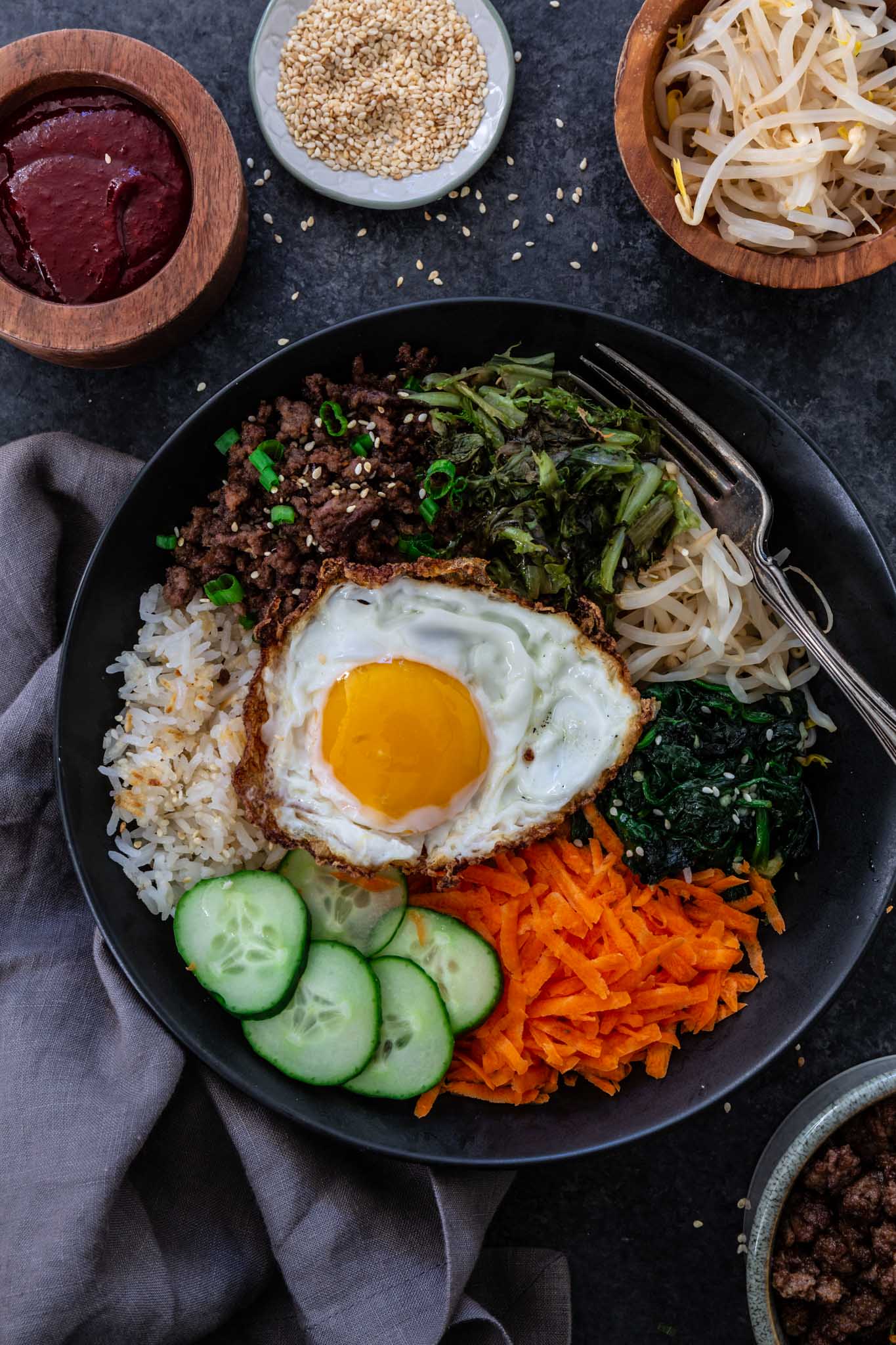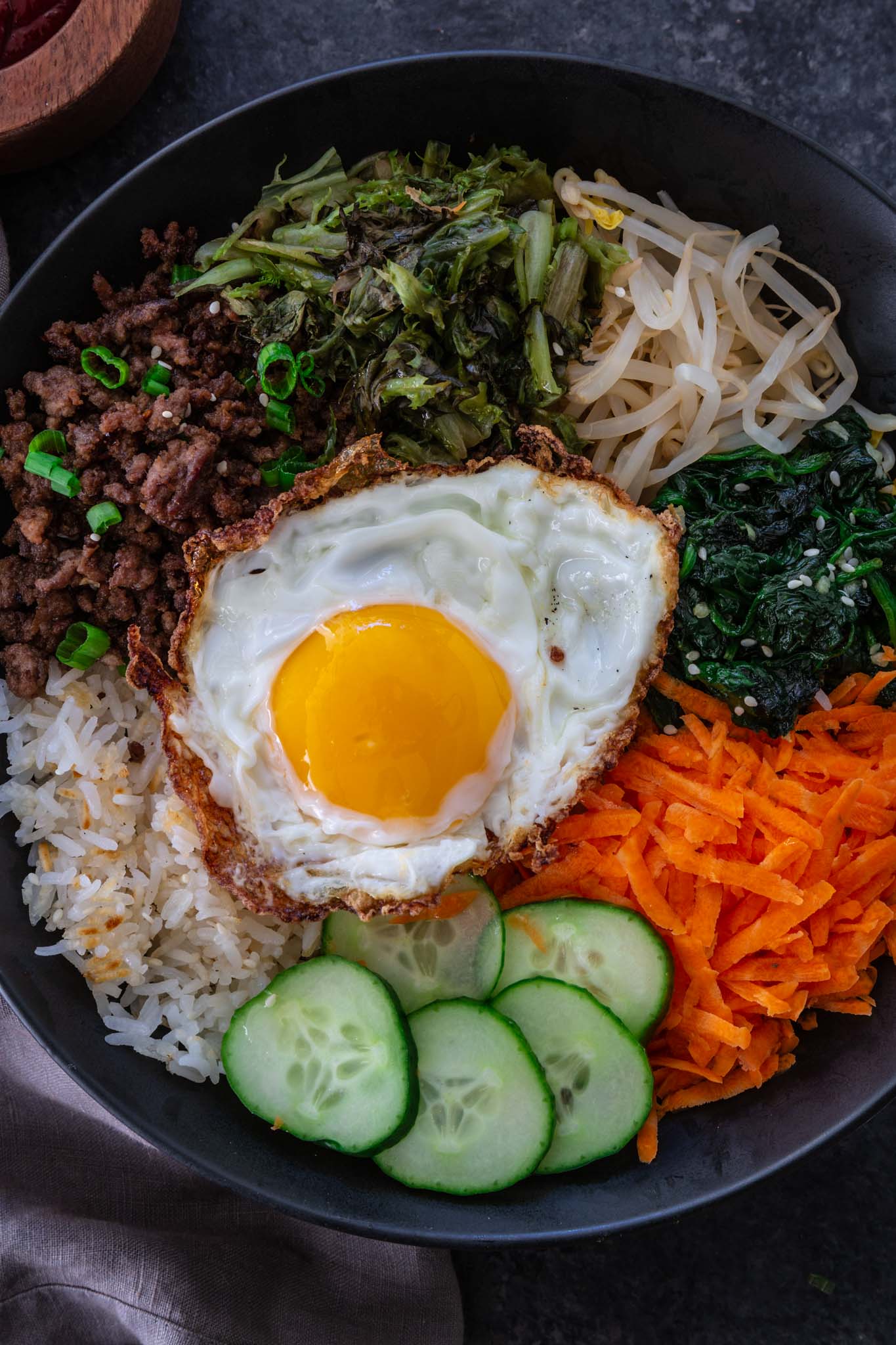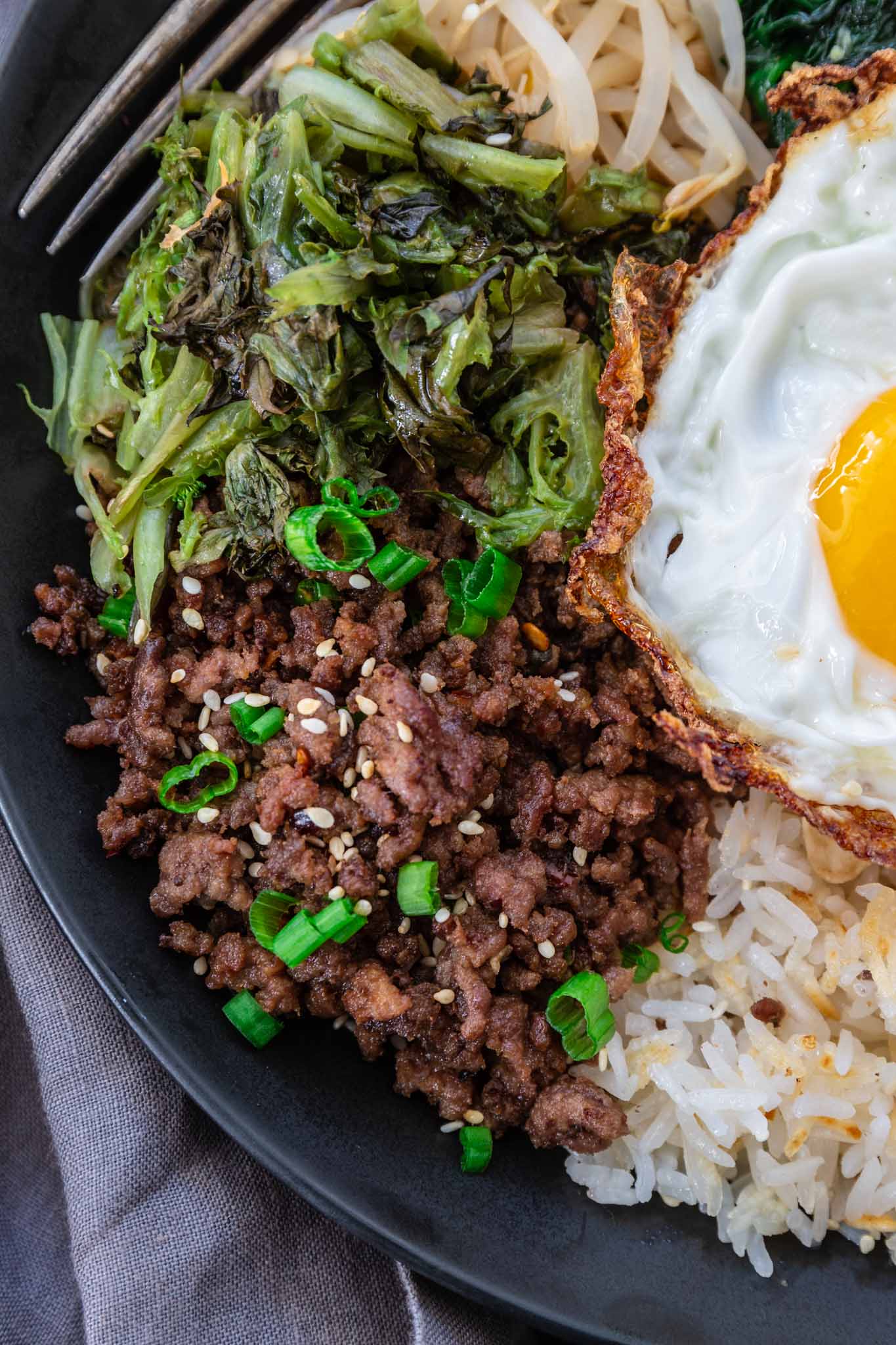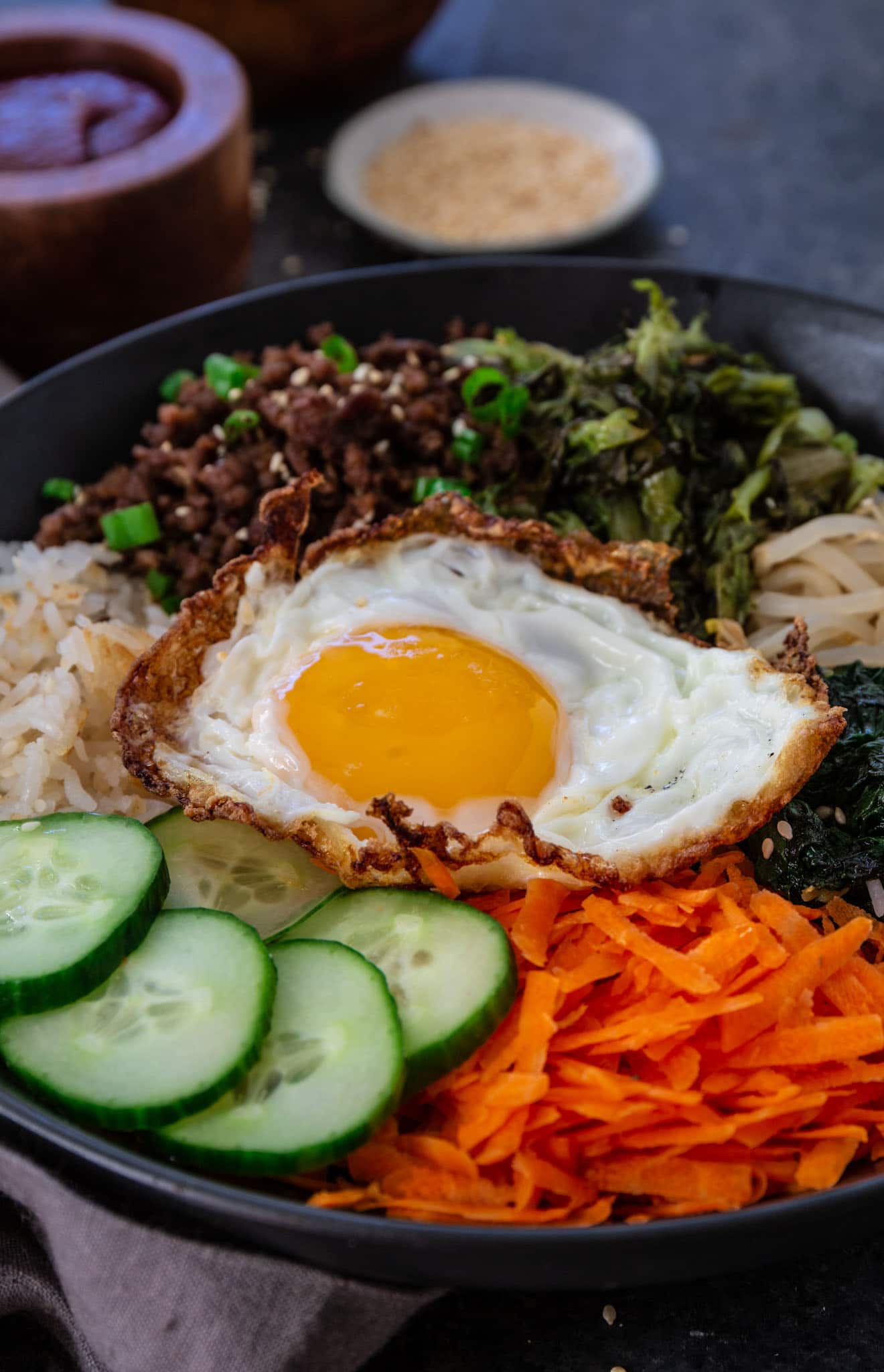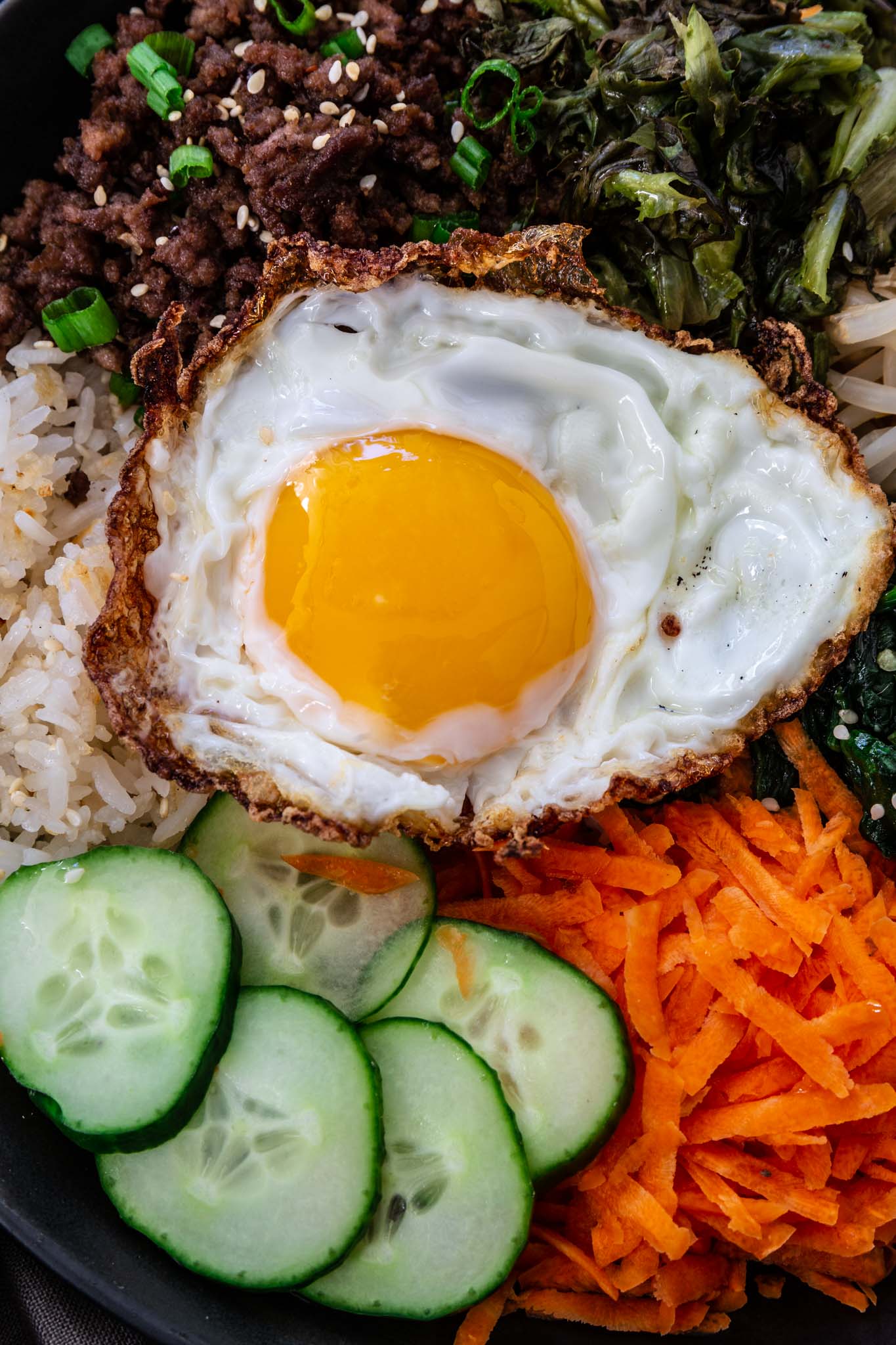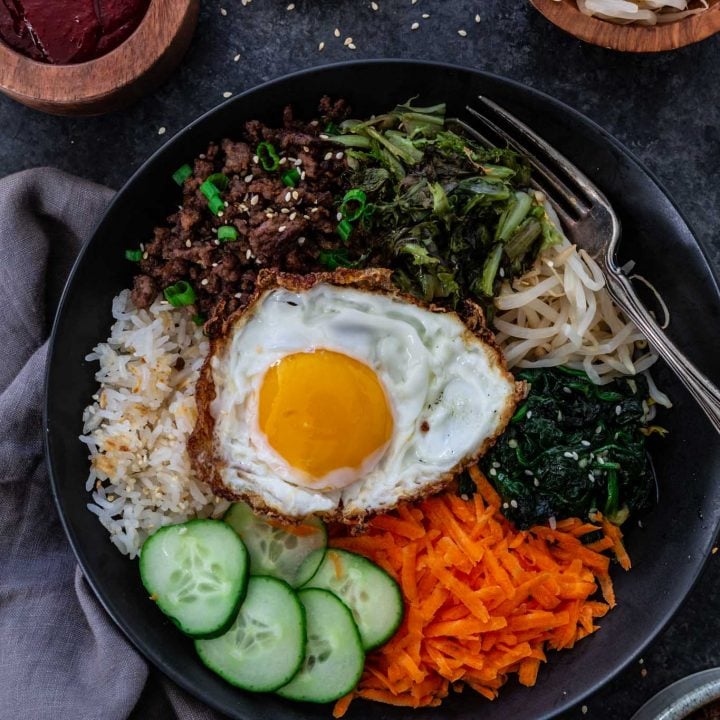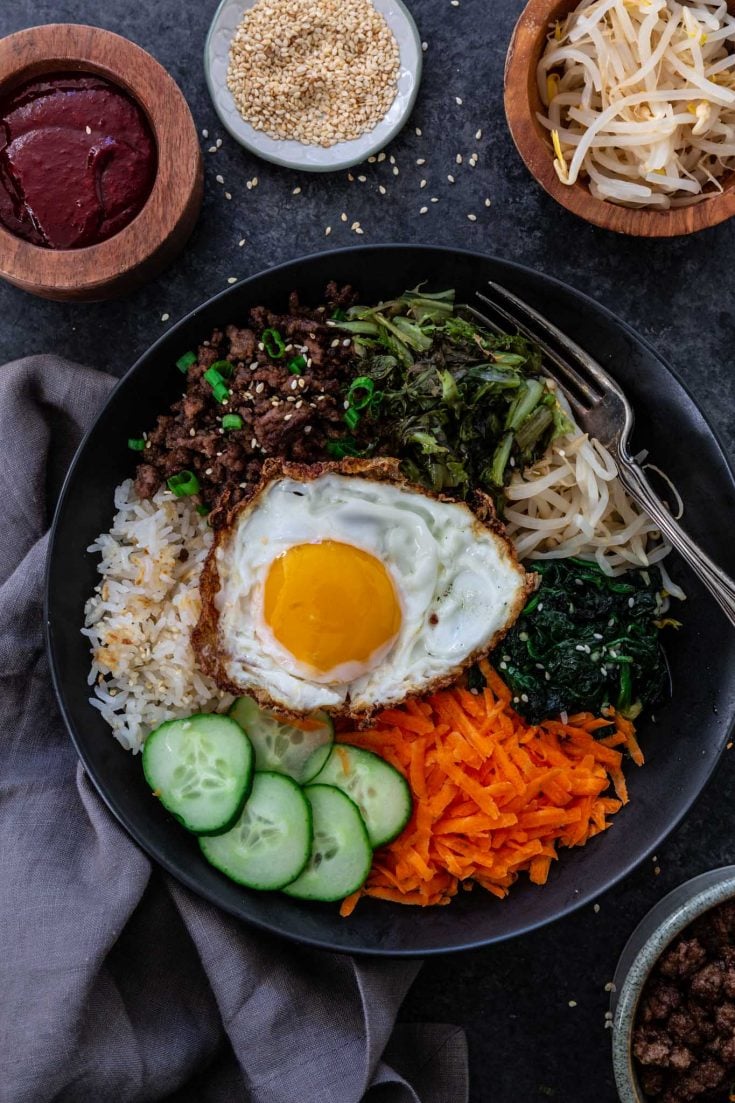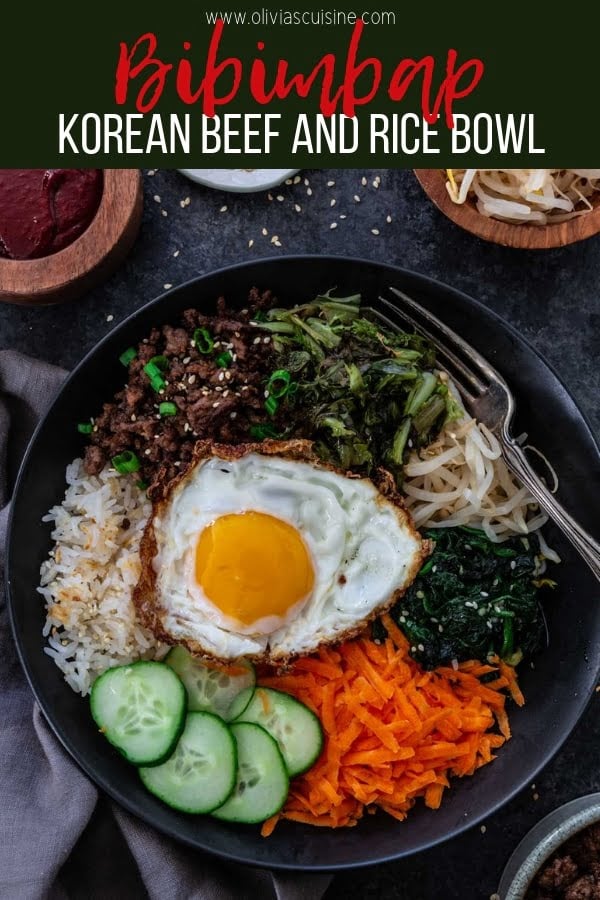I don’t usually post Asian recipes, not for the lack of love for those delicious cuisines, but purely due to the lack of knowledge. Those rich sauces and ingredients are not yet part of my culinary vocabulary, so I don’t feel comfortable teaching them here on the blog. That being said, I recently tried making Bibimbap and it was such a hit that I felt I needed to share the recipe. Is it authentic? I honestly have no clue! But it is damn delicious! If you, like me, are also intimidated by Asian cuisines, please give this a try. Although a little time consuming (due to the many elements), it is easy to make and highly customizable. And, who knows, maybe you’ll get inspired to dive further into those exotic and delicious dishes. That’s what happened to me!
What is Bibimbap?
Bibimbap, sometimes found as Bi Bim Bap or Bi Bim Bop, is a Korean dish that consists of a bowl of white rice topped with vegetables, beef (or seafood) and a fried egg. It is served with gochujang (chili pepper paste) sauce and/or soy sauce. The word bibimbap means “mixed rice” and, therefore, the dish is meant to be stirred thoroughly before eating! This dish was traditionally eaten on the eve of the lunar new year, as Koreans at that time felt that they had to get rid of leftovers before entering the new year. Another popular tale says that Bibimbap may have been eaten by farmers during farming season, as it was the easiest way to feed a large number of people. It became popular around the world in the 20th century and you can find it in pretty much every Korean restaurant!
Bulgogi made easier!
If you’re familiar with Korean cuisine, you know that Bulgogi is made of thin, marinated slices of beef (usually ribeye or sirloin) that are then grilled or stir-fried in a pan. Well, as you can see, I used ground beef instead. Although not authentic, I find it easier and quicker, since you can skip the marinade, as there is no need to tenderize ground beef. To give that bulgogi flavor that we all love, I add sesame oil, garlic, grated ginger, brown sugar, soy sauce, red pepper flakes, scallions and sesame seeds! It’s savory, sweet and packed with that umami flavor that people always look for in Asian dishes!
My twist on Bibimbap: Roasted Artisan Lettuce
Although not common, some people add lettuce to Bibimbap. Well, I was feeling creative and decided to add roasted lettuce, aka my new obsession, instead. All I do is roast a whole head of lettuce – drizzled with vegetable (or olive oil) and seasoned with salt and pepper. I find that the slightly wilted, slightly crunchy greens really takes the dish to a whole new level. It’s important to buy a whole head of lettuce, instead of the bagged alternatives, as you want the lettuce to caramelize on the exterior while still maintaining that warm creaminess on the inside. Are you drooling already? If you’ve never tried roasted lettuce before, believe me, you’re in for a treat! One more reason to buy a whole head instead of pre-chopped and bagged options is that it offers more versatility. There’s so much more to lettuce than just salads and wraps! I’ve been roasting, grilling, sautéing and adding it to pasta dishes, soups and even to salads. No need for boredom when you can get creative!
Perfect fried egg every time!
A sunny side fried egg is the cherry on top of a Bibimbap! It looks at you, tempting you to break that yolk to let it run all over, getting soaked by the rice. It is truly glorious! And since the stakes are so high, we gotta make sure that fried egg is perfect. Now, what is be perfect for me might not be for you. So here are some tips to make an egg that is crispy and runny, just how I like it!
Don’t be afraid to add oil. You have to add enough to cover the bottom of the pan! It might look like a lot, but you really need it if you’re after those golden brown edges. Make sure the oil is hot before adding the eggs. Cold whites hitting a not-hot-enough pan are going to stick! Crack the egg in a small bowl and add to the hot oil. Turn the heat down and shake the pan occasionally. You can also use a spatula to help tease apart any edges. Another good trick is to spoon the hot fat over the egg white to help it cook faster.
And that’s it, folks! I hope you give this dish a try. It is truly comforting! It is also a great candidate for make ahead meals. Just prep all the ingredients ahead of time and assemble the bowls when you are ready to eat them!
